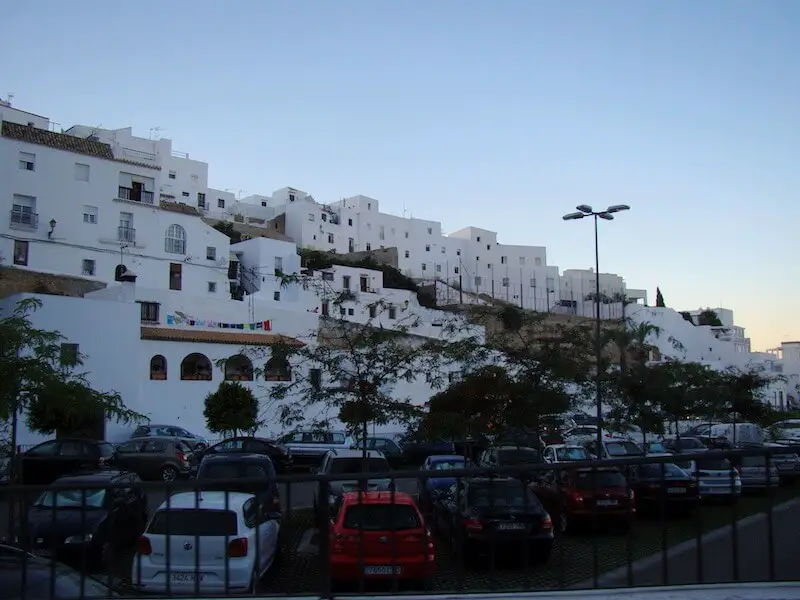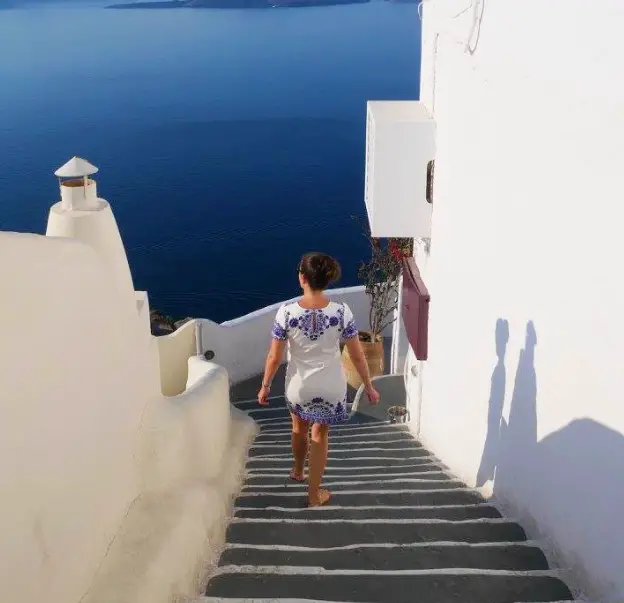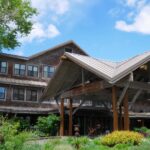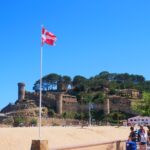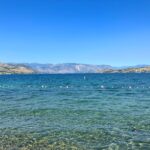Vejer de la Frontera (Full Travel Guide!)
Last Updated on April 11, 2024 by Kelly
Vejer de la Frontera is one of the most beautiful pueblos blancos (white villages) in Andalusia. Located near the Costa de la Luz, this small village is filled with white-washed buildings and rich in cultural traditions. I was lucky enough to have locals show me around, and it quickly became one of my favorite small towns in Spain.
We explored the castle at night and I saw several women dressed in black (wearing cobijados). Smelling the jasmine in the courtyard was another highlight of our evening castle tour!
If you’re planning a trip to Andalusia in Southern Spain, I highly recommend that you consider adding this small city to your itinerary. In this post, I’ll share with you the best things to do in Vejer de la Frontera.
About Vejer de la Frontera
The name Vejer de la Frontera means “Vejer of the Frontier” in English.
The hilltop town is a bit off the beaten track from most tourists’ itineraries, so it definitely feels like a hidden gem.
Vejer de la Frontera has a rich history. Because of its hilltop location and proximity to the sea, it had a natural strategic defense position. The Carthaginians populated the city in approximately 400 BC. At that time, the city was named Besaro. The Romans then occupied the city and had named it Bessipo. Many of the buildings in Vejer de la Frontera have Moorish architecture, due to their rule from the early 700s to 1200s. Vejer has also witnessed the nearby Battle of Trafalgar and was even occupied by Napoleon. If you’re a history buff, it’s worth visiting Vejer just to learn more about these events!
Currently, 12,000 residents live in Vejer de la Frontera (2018 census data).
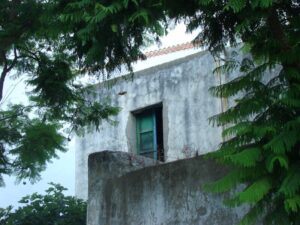
Best Things to Do
1. Visit the Castillo de Vejer de la Frontera (Vejer’s Castle)
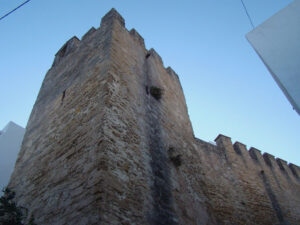
You’ll find the castle perched high in the center of the city. You can’t miss it! It was built between the 10th and 11th centuries, and it was the previous home of the Duques de Medina Sidonia.
The castle has three rectangular towers, two courtyards (el patio principal y el patio de armas), and a singular entrance in the Moorish style.
One thing you’ll notice as you walk through the castle is the perfumed scent of hibiscus flowers. We took a guided tour of Vejer, and our tour guide told us to close our eyes and to notice the first memory that comes to mind when we smelled the fragrance. Our guide told us that that memory is one of our most beloved.
You can enter the castle for free, but be sure to look at the hours of admission in advance of your visit.
2. Iglesia del Divino Salvador
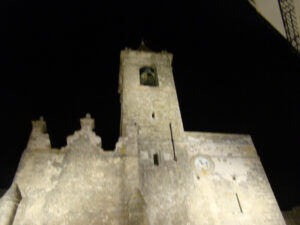
Also located in the tallest portion of Vejer de la Frontear is the Iglesia del Divino Salvador. This Catholic church was built upon a previous mosque. The church contains three different architectural styles, given its construction over three different time periods in history. First you’ll see Roman architecture, then the Gothic-Mudéjar style, and finally the traditional Gothic influence.
If you want to enter the church, it’s only open to the public during worship hours.
3. Walk Through the Narrow Streets
One of the best things to do while visiting Vejer de la Frontera is to wander through its narrow streets. The streets were purposely built to be narrow in order to provide more shade and to keep the buildings cool during the summer.
There are numerous photo opportunities as you walk through the white-washed town along the narrow cobble-stone streets. It’s enjoyable to wander aimlessly and stop by shops and restaurants you discover along the way.
4. Iglesia del Convento de la Concepcion (Ancient Convent of Our Lady of the Conception)
The Iglesia del Convento de la Concepcion was built in 1552 at the direction of Juan de Amaya the Elder. The church was constructed in the Renaissance style. Today, it’s used as a cultural center in Vejer de la Frontera.
5. Visit the Plaza de España (Plaza de los Pescaitos)
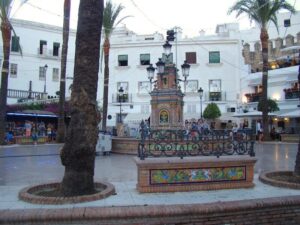
One of my absolute favorite places in Vejer de la Frontera is the Plaza de España. This charming plaza has a beautiful blue-tiled fountain at its center and a courtyard lined with palm trees. You’ll find cafes, restaurants bar, and more in the buildings adjacent to the plaza. The town hall (ayuntamiento) is also adjacent to the plaza. This central plaza is one of the most popular public spaces in the city.
The fountain at the center of the plaza is known as the Plaza de los Pescaitos (Plaza of the Little Fish). Decorated with Sevillan blue tiles, it stands in sharp contrast to the white-washed buildings behind it. In previous years, the town’s children would place little fish in the fountain, hence its name. This plaza has been ranked as one of Spain’s most beautiful plazas.
6. Casa del Mayorazgo
The Casa del Mayorazo is a residence that was built in the 18th century. If the door is open, visitors may be invited in to see the beautiful architecture and furnishings. The house has two patios that are filled with hundreds of potted plants, and the house has one of the city’s few towers that were build in the 13th to 14th century. (The tower’s name is Torre del Mayorazgo.) I read that visitors can freely enter the medieval tower, with a suggested donation. It also looks like you can even stay in an AirBnB room within the residence.
7. Museo de Vejer
Vejer has a rich and complex history. The Museo de Vejer is the perfect place to visit as you begin to take into account the many layers of history the town has witnessed over the years. The museum contains some ancient relics, including a sarcophagus from the 6th or 7th century.
Disclosure: This post may contain affiliate links. As an Amazon Associate, I may earn commissions from qualifying purchases.
8. Estatua de la Cobijada
Vejer de la Frontera is known for a black cloak-like dress, called a cobijado, that was traditionally worn as early as the 16th century. Although the all-black dress is reminiscent of Islamic garments, the black cloak is actually of Castilian origin. The black cloak is worn with a hood covering half the face, revealing just the left eye of the woman.
During the Spanish Civil War, the cobijado was prohibited in 1936. This was because there were concerns that weapons could be hid beneath the cloak, and it was also difficult to determine someone’s identity. The cobijado was reintroduced in 1976.
Today, the cloaks are typically worn during local festivals.
If you don’t see a cobijado during your visit to Vejer de la Frontera, you can visit the Estatua de la Cobijada, which is a statue of a woman wearing the cloak.
It’s also cool to note that Vejer’s tourism board has the slogan “Vejer te cobjia”, which means “Vejer shelters you.”
9. Attend a Festival in Vejer
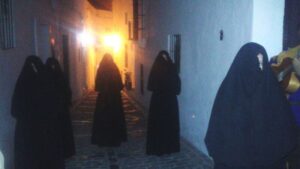
We visited Vejer de la Frontera during the month of August, so we were lucky to be present on a festival day. Vejer’s religious festival Velada Patronal en Honor de la Oliva takes place every 10th through 24th of August. On select days of the festival, you’ll see Cobijadas Mayor Infantil y Juvenil as well as Cobijadas de Honor.
During this time, we saw women wearing the cobijados strolling through the castle. We took a guided tour that explained the meaning of the tradition, and it was a very unique cultural experience!
10. View the Fortified Walls
Within the historic district of Vejer de la Frontera you’ll find fortified walls interspersed between the white-washed buildings. These walls were constructed in the 15th century after the Christian reconquest of the city. They are officially a Bien de Interés Cultural (a protected cultural and/or historic site).
11. Iglesia de la Merced
The Iglesia de la Merced was established in 1620. An earthquake in 1773 greatly damaged the church, and the church was all but abandoned for many years. In 1900, the church was restored.
12. View the Famous Arches
Throughout the city of Vejer, you’ll find beautiful stone arches between buildings and the fortified walls. Some of the city’s most famous arches include the Arco Sancho IV, Arco de la Villa, and Puerta de la Segur.
13. Hike the Windmills Route
You can’t visit Southern Spain without visiting a windmill. The windmills have important cultural context, as they were a prominent symbol in the world-famous book Don Quixote.
The windmills in Vejer use wind power from the levante (a famous easterly wind) to grind flour. Before this engineering design, only water-powered flour mills were used. If you hike the blue route of this trail, you’ll be able to see 7 windmills in approximately 3 kilometers.
14. Vejer Hammam
While you’re in Vejer, take some time to relax at a traditional hammam. The Vejer Hammam is located in a historic building. The hammam is a blend of traditional Roman and Moroccan baths. There’s a hot bath (caldarium), warm bath (tepidarium), cold bath (frigidarium), and a steam room. There’s a cooler area under a domed atrium where you can also relax between soaks. (Definitely sip on some mint tea while you’re taking a break!) There’s also a treatment room if you’d like to book a massage.
15. Mirador de la Corredera
Be sure to add this lookout to your itinerary. You’ll be able to gaze into the countryside outside of the city.
16. Calle de la Corredera
The Calle de la Corredera is one of the most popular avenues in Vejer de la Frontera. The street is lined with excellent bars, shops, and restaurants.
17. Eat at an Excellent Restaurant
While in Vejer de la Frontera, be sure to eat at one of its many notable restaurants. Some restaurants to consider include:
- La Juderia: Specializes in local dishes
- Corredera 55: Serves tapas and Mediterranean dishes
- El Jardin del Califa: Seating in a garden setting
18. Take a Tour
If you’re staying in Cadiz, you can take a guided tour to Vejer de la Frontera and Bolonia. The tour includes hotel pick-up and private transportation. In addition to visiting Vejer de la Frontera, you’ll also stop by Bolonia Beach and Baelo Claudio (an ancient Roman archaeological site).
How to Get There
Vejer de la Frontera is located in the province of Cadiz, which is in Southern Spain. (Although please note there is also a city named Cadiz by the same name!) Vejer de la Frontera is located about 55 kilometers (34 miles) from the city of Cadiz. Vejer de la Frontera is located about 160 kilometers (99 miles) from Seville.
You can reach Vejer de la Frontera by car or by bus. We personally drove to Vejer de la Frontera. We parked on the outskirts of town and I don’t remember it being too much trouble to find a spot. We parked near Plaza Manzanares.
It’s pretty affordable to travel to Vejer de la Frontera by bus. If you’re taking the bus from Cadiz to Vejer de la Frontera, it takes about 1.5 hours.
The nearest airport to Vejer de la Frontera is at Jerez de la Frontera (airport code XRY).
| Also add Cadiz, Jerez de la Frontera, and Ronda to your Southern Spain itinerary! |
Best Hotels
There are several beautiful hotels in Vejer de la Frontera. Here’s a few you might want to consider for your trip:
- Hotel La Casa del Califa: This historic hotel is housed within buildings that were constructed between the 10th and 16th centuries. The hotel has an excellent location right next to the Plaza de España. The hotel also has a rooftop terrace and bar.
- Boutique Hotel V: This hotel is located within a restored home from the 16th century. This is one of Vejer’s nicest hotels. (It has 4 stars). The rooms are elegant and the hotel boasts expanding views of the countryside.
- Hotel Plaza 18: This hotel is also located in the heart of the city. This boutique hotel has only 6 rooms, each of which are beautifully-styled.
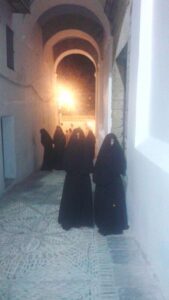
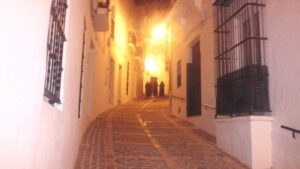
Summary
If you have several days to spend in the Cadiz region, it is absolutely worth visiting Vejer de la Frontera. The small hilltop town is filled with whitewashed buildings, a historic castle, and a beautiful plaza.
After visiting Cadiz numerous times, some local friends took my husband and I on an excursion to Vejer de la Frontera. Just driving into the city was an experience in and of itself. We could see the town perched in the hills from a distance, and the whitewashed buildings looked absolutely beautiful in contrast to the rugged countryside. We spent the day wandering around the city, eating amazing food, and visiting the historic sites. We stayed late to see the festival activities, and then drove back to Cadiz late in the evening. I thoroughly enjoyed the city, and I was surprised that I had never visited in my previous trips to Cadiz. I’d highly recommend that you add this beautiful town to your list of cities to visit in Andalusia!
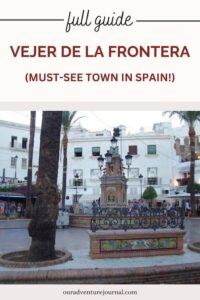
Disclaimer: We always strive for content accuracy. Since the time of publishing, travel-related information regarding pricing, schedules, and hours may have changed. Please look up such information directly from each vendor or institution for the most current information.

